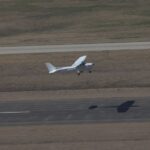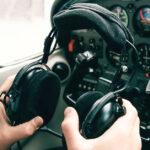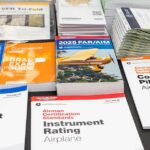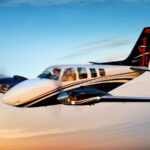By Nasa Glenn Research Center
Editor’s Note: From the time each of us learned how to fly, we have all heard different accounts from different pilots of “how it all began.” From the Montgolfier brothers to Wilbur and Orville, the stories are colorful. Recently, we came across an excellent presentation from the NASA Glenn Research Center, and we trust that you will enjoy this as much as we did. The research and insights that went into what we all take for granted is fascinating, so we are reproducing the explanation for you.
To answer the question, “how to become a commercial pilot” one must start at the beginning. Before the Wrights, people believed that there were two big problems that needed to be overcome before heavier-than-air flight was possible. The first was the aerodynamics of the airframe. It had to be shaped just right to produce high lift and low drag. It had to be light (because you had to lift it), yet very strong so that it was safe to operate. The other problem involved the propulsion system. The motor had to be lightweight, yet be powerful enough to develop sufficient power to move the airplane through the air. The motor also had to be coupled to some kind of propeller which would convert the output of the motor (shaft rotation) into thrust. So, the propeller had to be very efficient and have little performance loss.
Around the world, there were two “schools” of scientists and engineers who were trying to solve these problems. Lilienthal (Germany), Percy (England), and Chanute and Herring (United States) were attacking the aerodynamics problems building and flying small hang gliders between 1890 and 1900. Ader (France), Maxim (England), and Langley (United States) were attacking the propulsion problems.
A good example of the propulsion school of thought is the work of Hiram Maxim. In 1894, he built a large, steam-powered flying machine. The plane weighed 6,000 pounds, had a wingspan of more than 120 feet, was powered by two steam engines pushing two 18 foot propellers and carried a crew of four. This plane actually got a few inches off the ground in a test flight in 1894, but it was hit by a gust of wind and fell over. Maxim had no control system on his aircraft.
The best example of the aerodynamics school of thought was Otto Lilienthal. Lilienthal was a German engineer who was studying the flight of birds. He created a large swing-arm device on which he would mount models and measure the lift and drag of the models. He published theses results and the Wrights obtained copies of them from the Smithsonian in 1900. Lilienthal used the information to build a variety of “hang gliders.” He constructed the large hill shown in the picture and would jump from the top of the hill and glide to the bottom.
His aircrafts were rigid and he would hang below the wing and attempt to balance the craft by swinging his body from side to side. He performed these flights for five years between 1892 and 1897, accumulating nearly five hours of flight time. Unfortunately, in 1897, he was killed during a flight when a gust of wind pushed him into a stall. He fell in from 40 feet above the ground. The Wrights read about his death and correctly understood that Lilienthal could not provide enough control to his aircraft by simply shifting his weight. Something else was needed.
The Wright brothers correctly understood that there was a third problem that had to be solved before heavier-than-air flight was possible. The aircraft must provide some system for stability and control. Stability and control are actually opposing concepts. An aircraft can be designed to be very stable (if disturbed, it will return to its original flight conditions.) But a stable aircraft is hard to control. In order to maneuver the airplane, you have to overcome its stability.
The designs of Lilienthal and Maxim included some aspects of stability, but the pilots could not control them during transients. The brothers decided to “make a small contribution” to the study of flight by designing an aircraft that was just marginally stable but would rely on the skill of the pilot to control the aircraft in flight. The pilot would no longer be a passenger, but would have an active role during flight.










